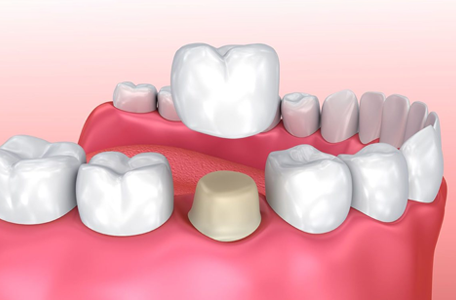Dental Crown Bridges

Restoring a tooth to its original shape, size, and function is a cornerstone of dental care, and one of the most effective ways to achieve this is through the use of dental crowns and bridges. These prosthetic devices have been a mainstay of dental restoration for decades, offering a reliable and aesthetically pleasing solution for teeth that are damaged, decayed, or missing. In this comprehensive guide, we will delve into the world of dental crowns and bridges, exploring their benefits, types, and the process of getting them.
Understanding Dental Crowns
A dental crown, often referred to as a cap, is a prosthetic device that completely covers a tooth. It is designed to restore the tooth’s shape, size, strength, and appearance. Crowns are used for a variety of reasons, including protecting a weak tooth from breaking, restoring a tooth that is already broken, covering a tooth with a large filling, covering a dental implant, or making a cosmetic modification. The materials used for crowns can vary, including ceramic, porcelain fused to metal, gold alloys, and base metal alloys, each with its own set of advantages and disadvantages.
Exploring Dental Bridges
A dental bridge, on the other hand, is used to replace one or more missing teeth. It consists of two crowns for the teeth on either side of the gap (abutment teeth) and a false tooth or teeth in between (pontics). Bridges are designed to fill the gap created by missing teeth, improving the appearance of one’s smile, the ability to chew, and even the quality of speech. Similar to crowns, bridges can be made from various materials, and they come in different types, such as traditional bridges, cantilever bridges, Maryland bridges, and implant-supported bridges.
Benefits of Crowns and Bridges
The benefits of dental crowns and bridges are numerous. They not only enhance the appearance of one’s teeth, thereby boosting confidence, but they also improve oral function, allowing for better chewing and speaking. Additionally, by covering or replacing damaged or missing teeth, crowns and bridges prevent further complications such as shifting of adjacent teeth, erosion of the jawbone, and changes in facial structure. They are durable, with a lifespan of 5 to 15 years or more, depending on the material and oral hygiene practices.
The Process of Getting Crowns and Bridges
The process of getting dental crowns or bridges typically involves several steps. The first step is a consultation with a dentist to assess the condition of the teeth and determine the best course of action. This is followed by preparation of the teeth, which involves reshaping them to fit the crown or bridge. Impressions of the teeth are then taken and sent to a laboratory where the crowns or bridges are fabricated. While the permanent crowns or bridges are being made, temporary ones are placed to protect the teeth. Finally, the permanent crowns or bridges are cemented into place, providing a natural look and feel.
Maintenance and Care
To ensure the longevity of dental crowns and bridges, proper oral hygiene is essential. This includes regular brushing and flossing, as well as dental check-ups. Special care must be taken around the bridge area, using floss threaders or interdental brushes to clean between the bridge and gum. Avoiding biting or chewing on hard objects can also prevent damage to the crowns or bridges.
Advanced Technology in Crowns and Bridges
The field of dentistry is constantly evolving, with advancements in technology leading to more accurate, efficient, and comfortable experiences for patients. Computer-aided design (CAD) and computer-aided manufacturing (CAM) technologies are now widely used in the fabrication of crowns and bridges, allowing for precise fits and natural aesthetics. Additionally, materials science has progressed, offering more durable and esthetically pleasing options.
Considering Insurance and Cost
The cost of dental crowns and bridges can vary widely, depending on the type of material used, the location, and the dentist’s fees. Insurance coverage also plays a significant role, with many dental insurance plans covering at least a portion of the cost. It’s essential to consult with a dentist and an insurance provider to understand the financial implications and plan accordingly.
What are the different types of dental crowns available?
+Dental crowns come in several types, including ceramic, porcelain fused to metal, gold alloys, and base metal alloys. Each type has its own set of benefits and is chosen based on the patient's needs, the location of the tooth, and aesthetic considerations.
How long do dental bridges last?
+The lifespan of a dental bridge can range from 5 to 15 years or more, depending on factors such as the type of material used, oral hygiene practices, and the patient's overall health. With proper care, bridges can provide many years of service.
Can dental crowns and bridges be used for cosmetic purposes?
+Yes, dental crowns and bridges are not only used for functional restoration but also for cosmetic purposes. They can improve the appearance of teeth, closing gaps and enhancing the overall smile. Modern materials and techniques allow for highly esthetic results that are indistinguishable from natural teeth.
In conclusion, dental crowns and bridges are indispensable tools in modern dentistry, offering solutions for a wide range of dental issues. From restoring damaged teeth to replacing missing ones, these prosthetic devices have the power to transform not only the function of one’s mouth but also the confidence that comes with a healthy, beautiful smile. With ongoing advancements in technology and materials, the future of dental restoration looks brighter than ever, promising even more effective, durable, and natural-looking solutions for dental health needs.